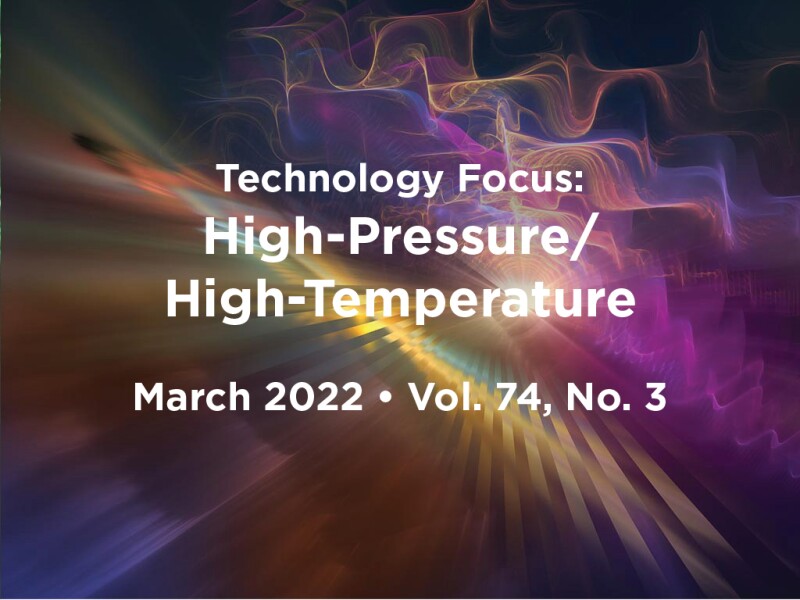What a difference a year can make. Oil and gas prices have reached and stabilized at levels that have not been seen for over half a decade, demonstrating that the adage “low oil prices are the remedy of low oil prices” is still true.
Let us now see if we are again at the cusp of a new period of exuberance and if the cyclical nature of oil prices could soon show its grim face once more. A key industry discipline required to delay, or maybe even avoid, another price collapse is the planning and execution of high-pressure/high-temperature (HP/HT) projects.
Perhaps the movement of some financial institutions toward considering environmental, social, and governance aspects when deciding to fund oil and gas projects will provide the beneficial longer-term stabilization of the current oil and gas price levels. More than ever, the saying “the easy/cheap oil is over” is true, and that requires a more-stable economic environment than we had in past years to assure the world’s uninterrupted energy and chemical feedstock supply, an important share of which will come from HP/HT reservoirs.
For this year, I think we can see where the activity currently is from the available HP/HT related papers of the past year or two. A predominance of papers came from Chinese companies enthusiastically embarking on these challenging projects to secure their domestic energy needs and reporting their technology innovations and learning curves in interesting case studies. I was able to find some geographic diversity by including case studies from the Middle East as well, where good ideas and innovative low-cost approaches have enabled economically feasible project delivery in tough times. Notably absent in the choice of papers were the traditional HP/HT areas of the deep Gulf of Mexico and the North Sea. But maybe the more favorable oil and gas prices will spawn some new activity in these areas as well, if the regulatory and fiscal environment also improves.
Reading this year’s case studies, some of the more experienced engineers among us will notice that, on some occasions, known challenges have been encountered that, in our experience, had been successfully mitigated in previous projects. This is likely a weakness from the Great Crew Change, where the knowledge preservation and transfer may not always have happened satisfactorily. The cut-throat cost-saving environment of the past few years, combined with the worldwide health crisis leading to curtailed travel and many workshops and conferences being canceled, certainly contributed to this lack of information flow as well. This is why it is so important to engage in SPE through online interest/discussion groups to find the necessary expertise in our pool of members. With this recommendation, I hope you will read the 2022 featured papers with interest and take them as encouragement and a source of good ideas for the years of greatly improved activity levels before us.
This Month’s Technical Papers
Challenges Overcome in Drilling and Testing a Deep, Deviated HP/HT Offshore Gas Well
Well-Integrity-Management Approach in HP/HT Gas Field Ensures Stable Production
Production Strategy calls for Injection of High-Gas/Oil-Ratio HP/HT Crude
Recommended Additional Reading
IPTC 20148 Solid Management Optimization for Offshore Big-Bore HP/HT Sour Gas Well Cleanup by Ardian Nengkoda, Saudi Aramco, et al.
SPE 199052 One of the Deepest Wells Drilled in Bolivia: High Pressure and Temperature in More Than 9 Months of Drilling, No Casing Wear Detected by Russell Mertens, WWT International, et al.
SPE 202250 Next-Generation Ceramic Sand Screens as Openhole Completion Solution in High-Rate Erosive and Corrosive Well Environment at Dvalin HP/HT Field, Offshore Norway by Robert Ritschel, Wintershall DEA, et al.

Robert Ziegler, SPE, is director of operations at AP&L and is an SPE lifetime member. His career spans 37 years in the industry, mainly with operators Shell, Chevron, Petronas, and Cairn India. Ziegler’s achievements include the first deepwater application of pre-blowout-preventer riserless mudline pumping and the first application of a commercial deepwater dual-gradient system in the form of post-blowout-preventer-controlled mud level. Most recently, he guided a service company in the development of a next-generation backpressure deepwater and harsh-environment managed-pressure-drilling (MPD) system, for which he holds two patents. On the operations side, Ziegler was involved in many firsts, including pioneering directional 13⅜-in. and 9⅝-in. casing drilling offshore in more than 100 sections from jackup and semisubmersible rigs and the first use of MPD for an offshore HP/HT well. Ziegler is a member of the JPT Editorial Review Committee.

